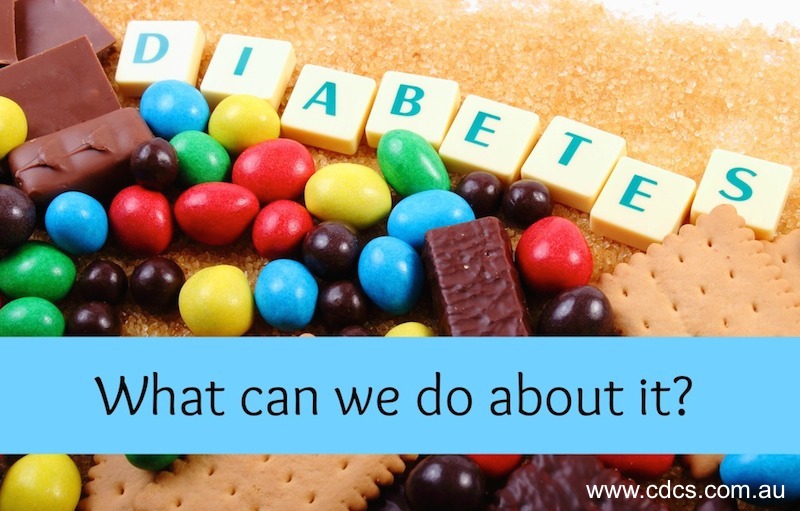Last month saw a worldwide focus on the topic of ‘Overcoming Diabetes’ through World Health Day. With an estimated 347 million people in the world living with diabetes and an expectation that by 2030 it will become the 7th leading cause of death, I think that focus is definitely warranted.

Diabetes is a chronic disease that causes high amounts of glucose (a form of sugar) to remain in the bloodstream. This high glucose level causes damage to the heart, blood vessels, eyes, kidneys and nerves. Because of this, diabetes has now become the leading cause of blindness, amputation and kidney failure.
Blood sugar levels are normally balanced by a hormone produced by the body called insulin. Insulin assists to transport the glucose found in food to the cells of the body where is it used as energy. It is either a lack of insulin or the body’s ineffective use of insulin that causes diabetes.
There are two major forms of diabetes
- Type 1, which is the result of a lack of insulin produced by the body, and
- Type 2, which arises from the ineffective use of insulin by the body.
While type 2 diabetes was previously rare it now accounts for 90% of all diabetes cases.
Currently the incidence of diabetes in the general population of Australia sits at 7.3% with this figure expected to grow over the next twenty years. Studies link the risk of developing Type 2 diabetes with obesity, so it is no wonder that a glance at the Australian demographic profile highlights the potential for this increase:
- 66.4% overweight
- 29.9% obese
- 25.8% physically inactive
In indigenous populations of Australia, the incidence of diabetes is higher. The 2005 National Aboriginal and Torres Strait Islander Health Survey found that an Aboriginal or Torres Strait Islander (ATSI) person was three times more likely to suffer from diabetes than the general population. They were also more likely to get the disease at a younger age. The study found contributing factors included:
- Obesity was 5 times more common
- 40% reported being inactive
- Diets were reported to be high in sugar and fatty foods
- Housing and living environments were poor with overcrowding and poor hygiene
The good news though is that research has also found that the risk of developing Type 2 diabetes can be drastically reduced by participating in 30 minutes of moderate intensity exercise most days and eating a healthy diet.
The latest dietary recommendations from Diabetes Australia include:
- Eating more vegetables, whole fruits, eggs, milk, cheese, unsweetened yoghurt, nuts and avocado;
- Swap refined or low fibre products for high fibre alternatives e.g.
- White rice for brown rice
- Normal white potatoes for sweet potatoes
- Sugary breakfast cereal for oats/porridge
- White pasta for wholemeal pasta
- Eat less deep fried food, processed meat, chips, sweets, refined rice and pasta, low fat products where the fat has been replaced with sugar.
You can find more information about healthy eating for diabetes by clicking here.
While your clients on community might be responsible for their own health, there are a few ways you can support and encourage a healthier lifestyle, including running a diabetes awareness day with the local clinic or remote nutritionist, having staff and clients develop a poster to put up in the aged care centre or run activities that encourage activity from participants – with the cooler weather upon us, it might be a great time to start to organise some bush tucker trips for clients.
 I also want to challenge us all as coordinators or support people to not overlook the importance of modelling these messages. It is difficult to promote a healthy lifestyle if we are not attempting to live it ourselves. All of us could probably move more, eat a bit better, ditch some poor habits – myself included.
I also want to challenge us all as coordinators or support people to not overlook the importance of modelling these messages. It is difficult to promote a healthy lifestyle if we are not attempting to live it ourselves. All of us could probably move more, eat a bit better, ditch some poor habits – myself included.
The following key messages from the Australian Indigenous Health InfoNet can be used to guide your own journey and those of your clients to better health:
- Lose weight
- Eat healthier, more natural foods
- Eat smaller meals throughout the day
- Take more exercise, even if that is just walking to the local store
- Take medication if prescribed
- Stop smoking
- Drink less alcohol
- Follow good hygiene practices
It’s up to all of us to change those statistics. What steps will you take today to do so?
- Aged Care Packages – what's in the box? - February 16, 2024
- 11 Ways to Make Your Progress Notes Better - September 22, 2023
- Vulnerable Clients – Who are they? - July 14, 2023



